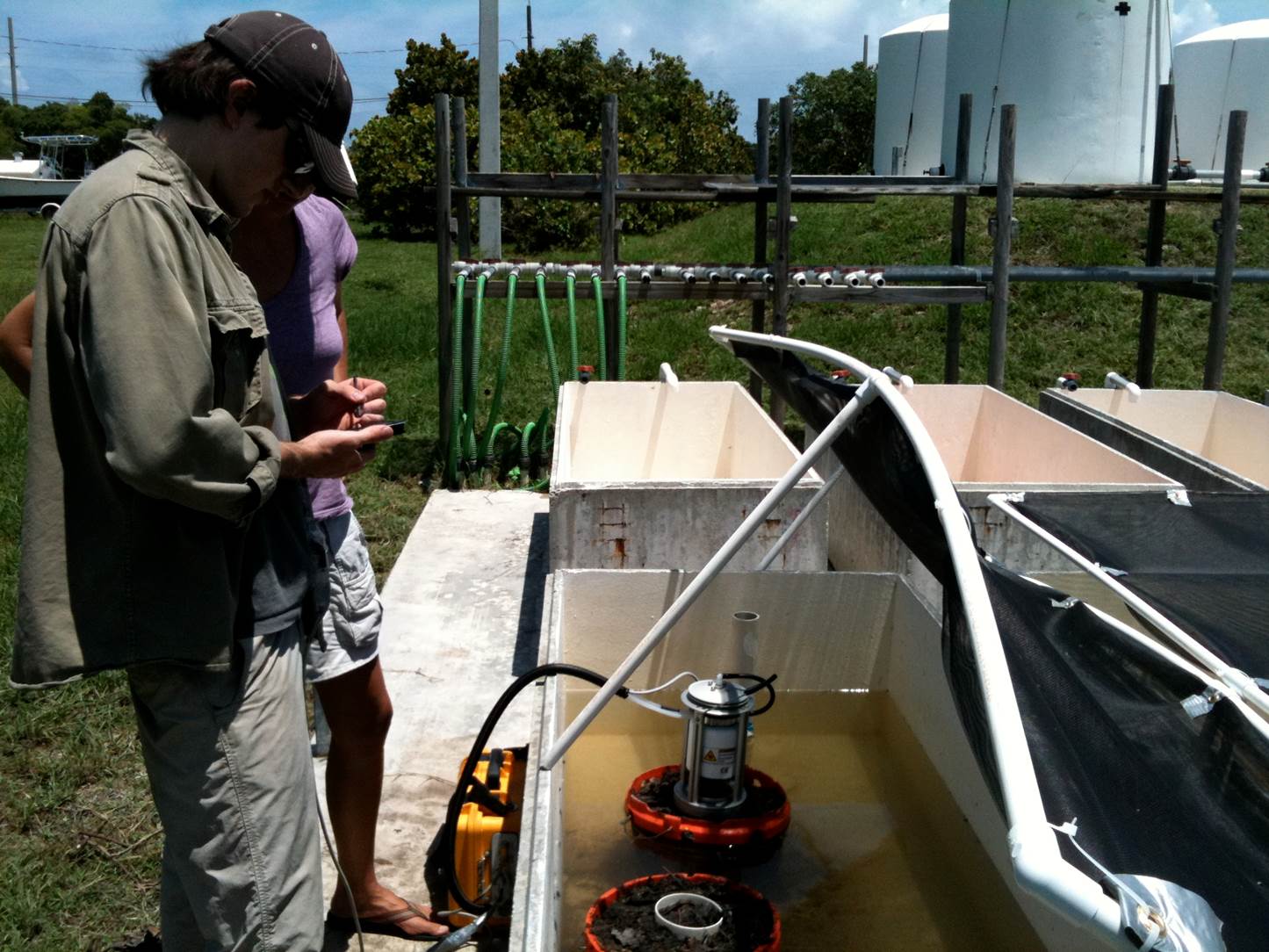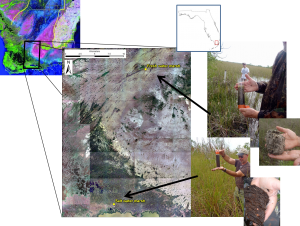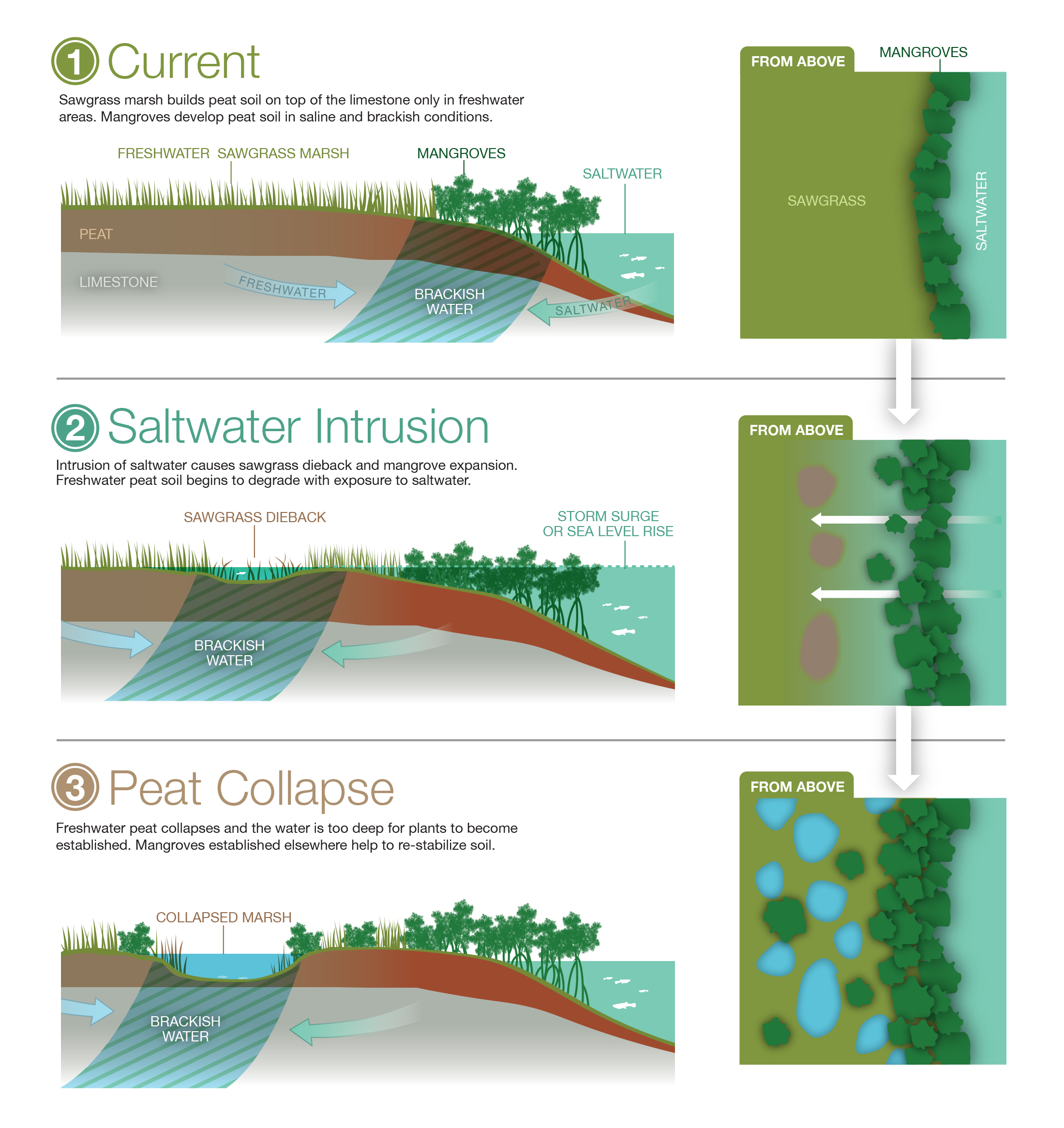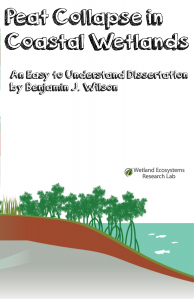Florida Sea Grant- Coastal Peat marsh salt water intrusion mesocosm & field experiments
Background
Everglades coastal wetlands provide a number of valuable ecosystem services such as protection against storm surge, sites of recreation, and support of biodiversity through the habitat these wetlands provide for numerous species of fish and wildlife.
But, these environments are facing many problems today. Reduced freshwater flow has increased saltwater intrusion and increased the area of Everglades National Park vulnerable to storm surge. Saltwater intrusion contaminates our drinking water supply and may lead to collapse of freshwater peat soils results in dramatic elevation loss leading to further penetration of saltwater and loss of coastal wetland habitat.
When trying to address these problems, conservationists are faced with several critical knowledge gaps, which include:
- Freshwater peat soil in Everglades National Park is collapsing with increased exposure to saltwater. Cape Sable is the most notable example; extensive area of collapse has occurred due to numerous canals that have facilitated saltwater intrusion into the interior.
- We do not understand the rate of collapse or the mechanisms contributing to soil collapse. This is necessary in order to understand how restoration will benefit coastal habitats and habitat transition in the future with sea level rise.
- We also need to understand (FOCC 2010, Pearlstine et al. 2010, Hopkinson et al. 2012):
- impacts to habitats known for vulnerable rare and endemic species,
- loss of organic soil and elevation that will increase risk of storm impacts,
- increased vulnerability of groundwater supplies and reduced capacity for C storage
For more information, check out this video that helps to explain the dangers facing the Everglades Peat Marsh ecosystem and the greater South Florida community .
Research Objectives
We are conducting experiments in freshwater and brackish water peat marshes to assess the effects of projected sea-level rise on Everglades coastal ecosystems. Our work is evaluating the potential for and mechanisms of peat collapse using integrated mesocosm and field manipulations.

Map of southern coastal Everglades (left), study sites in freshwater sawgrass marsh and brackish peat marsh (center) and peat substrate identified at each location (right).
We are measuring various response variables and are integrating many of these results to calculate the carbon balance of peat soil. A gain or loss in soil carbon with increasing
salinity would suggest that saltwater intrusion contributes to peat collapse. Inputs of carbon to the soil from root production is hypothesized to be the largest contributor to Everglades peat.
Dr. Ben Wilson has written about this work in an accessible and innovative zine. This is a great way to learn about peat collapse and the work the Wetland Ecosystems Research Lab is doing to understand it.
Project Collaborators
Stephen Kelly, Stephen Davis, Carlos Coronado-Molina, Evelyn Gaiser, John Kominoski, David Rudnick, Fred Sklar, Joseph Stachelek, and FCE LTER collaborators.
Funding sources
This project is funded by Florida Sea Grant, the South Florida Water Management District and the National Park Service.
Contact Tiffany Troxler or any of our project collaborators for more information and research opportunities. Also visit fce.lternet.edu



